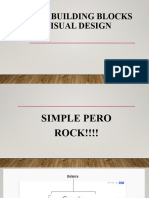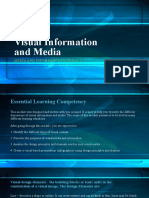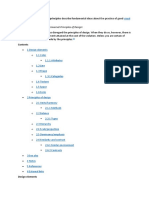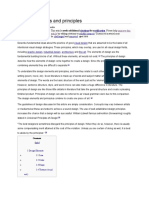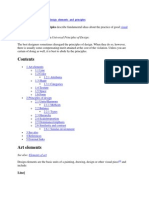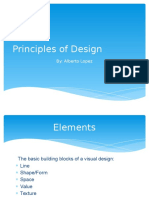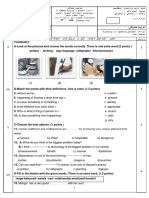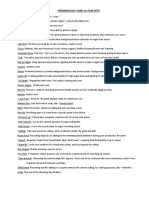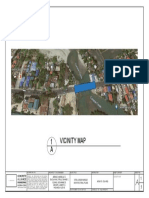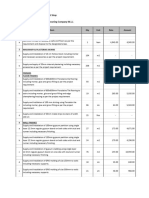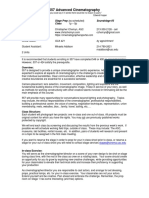0% found this document useful (0 votes)
40 views22 pagesVisual Design Elements & Principles of Design - CLASS NOTES
The document outlines the fundamental visual design elements and principles, including components such as point, line, shape, color, value, space, and texture. It also discusses design principles like balance, emphasis, contrast, rhythm, proportion, unity, and economy, which contribute to effective design. Each element and principle is described with its characteristics and effects on visual perception.
Uploaded by
nickc3kCopyright
© © All Rights Reserved
We take content rights seriously. If you suspect this is your content, claim it here.
Available Formats
Download as PDF, TXT or read online on Scribd
0% found this document useful (0 votes)
40 views22 pagesVisual Design Elements & Principles of Design - CLASS NOTES
The document outlines the fundamental visual design elements and principles, including components such as point, line, shape, color, value, space, and texture. It also discusses design principles like balance, emphasis, contrast, rhythm, proportion, unity, and economy, which contribute to effective design. Each element and principle is described with its characteristics and effects on visual perception.
Uploaded by
nickc3kCopyright
© © All Rights Reserved
We take content rights seriously. If you suspect this is your content, claim it here.
Available Formats
Download as PDF, TXT or read online on Scribd
/ 22







